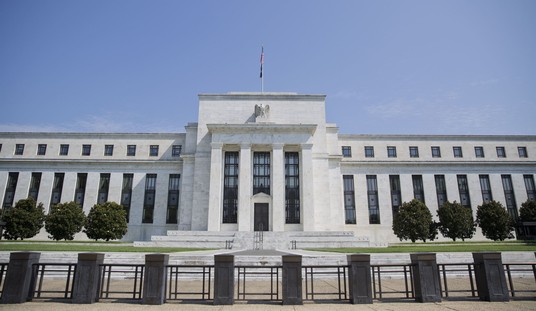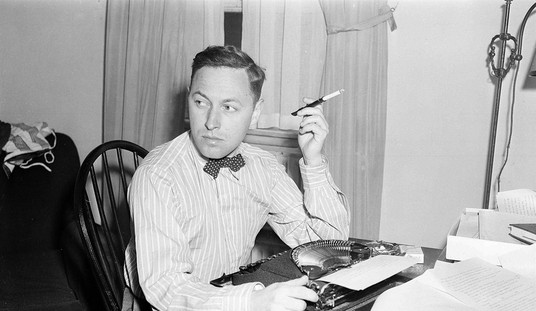When President Obama said the private sector was doing “just fine” but the public sector was hurting, he had apparently not read Time Magazine’s article “Bubble on the Potomac” by Andrew Ferguson. Its featured photo is a person using a digitally dispatched limousine to shop for groceries.
Aside from its wealth, the single defining feature of über-Washington is its youth. Most of the people who have moved to Washington since 2006 have been under 35; the region has the highest percentage of 25-to-34-year-olds in the U.S. “We’re a mecca for young people,” Fuller says. One recent arrival says word has gotten out to new graduates that Washington is where the work is. “It’s a place where a liberal-arts major can still get a job,” she says, “because you don’t need a particular skill.” …
Other big cities, of course, have made it through the recession in one piece. But few eased through the crash as lightly as D.C., much less prospered so widely on the rebound.
And what the city had to offer wasn’t bad at all. It was definitely hip, definitely upscale. There’s organic $25/pound cheese, premium ice cream and oh yes, a trendy limousine service.
called Uber, launched in December after great success in San Francisco and New York City. “The growth here has been unique in our experience,” says Rachel Holt, who oversees Uber’s burgeoning D.C. operation. Uber is Web-based and cashless: customers call for limos with a smart-phone app and pay with a credit card on file. It’s also deluxe. Riders expect nothing lower on the limo food chain than a Town Car, with offerings going up to Mercedes and beyond. Holt says with some surprise that locals are using Uber as everyday conveyance for commuting and shopping. Uber exploits Washington’s unique combination of heavy use of social media, a young and often carless population and customers with fistfuls of disposable income. When the D.C. taxi commission made a move to shut down Uber earlier this year, Twitter erupted in indignation.
But the city on the Potomac is not alone in its successful evasion of the recession. Last year, when EU leaders were sitting down to discuss the growing Greek crisis, it provided the occasion for EU President Herman Von Rompuy to pass around a 14 page brochure depicting the new Europa Building in Brussels, designed to look like a womb or wastebasket, depending on your point of view, for a measly 280 million pounds sterling. The brochure alone was revealed to have cost 100,000 pounds.
The building was unveiled to EU leaders by Mr Van Rompuy in a 14-page slick color prospectus, produced at a cost of £100,000, when they sat down to a Brussels summit dinner on Thursday night formally dedicated to imposing a savage austerity program on Greece.
Before discussing the Greek debt crisis that has threatened the existence of the euro, Mr Van Rompuy surprised EU leaders, who were tucking into a starter of scallops with artichoke vinaigrette, by trumpeting the venue, due to open in 2014, which will come complete with a “colorful woven carpet” to represent “European diversity”.
The troubles of ordinary people are just a distant rumor that is barely heard above the clink of wine glasses and forks on china. The Europa complex may open just in time to provide a backdrop for continental insolvency. Yet by some lights it will have served its purpose even if it is never used. Albert Speer believed that the fundamental purpose of building was to look good in ruin; it “is the concept that a building be designed such that if it eventually collapsed, it would leave behind aesthetically pleasing ruins that would last far longer without any maintenance at all”.
Even better than the once-was is the never-was but could-have-been. Perhaps the best example of this is was the planned Palace of the Soviets. “If built, it would have become the world’s tallest structure of its time.” It had a hall with seating capacity of 21,000 not to mention a statue of Lenin 328 tall perched on a structure already more than 1,000 feet in height.
Sergey Kirov, speaking at the Congress, proposed building the congress palace “on the sites of palaces once owned by bankers, landlords, and tsars.” Very soon, Kirov said, existing halls would be too small to fit the delegates from new republics of the Union. The palace “will be just another push for the European proletariat, still dormant…to realize that we came for good and forever, that the ideas… of communism are as deeply rooted here as the wells drilled by Baku oilers.” … Arc lamps will flood the villages, towns, parks and squares, calling everyone to honor Lenin even at night…
But the Palace was never completed. First the Nazi invasion, then bankruptcy put the kibosh on it. The Soviet Union, which was to inherit the earth, lastly only a little more than 70 years. Perhaps all unsustainable governments are like bubbles. They start off by announcing they will conquer the earth and they finish up not even being able to pay the trash collectors. The Soviet Union is gone. As for the EU and digital DC — well who knows? Bubbles come and bubbles go. But there’s always one ready to take the place of the last.

All Honor to Lenin Even At Night
Belmont Commenters
How to Publish on Amazon’s Kindle for $2.99
The Three Conjectures at Amazon Kindle for $1.99
Storming the Castle at Amazon Kindle for $3.99
No Way In at Amazon Kindle $8.95, print $9.99












Join the conversation as a VIP Member